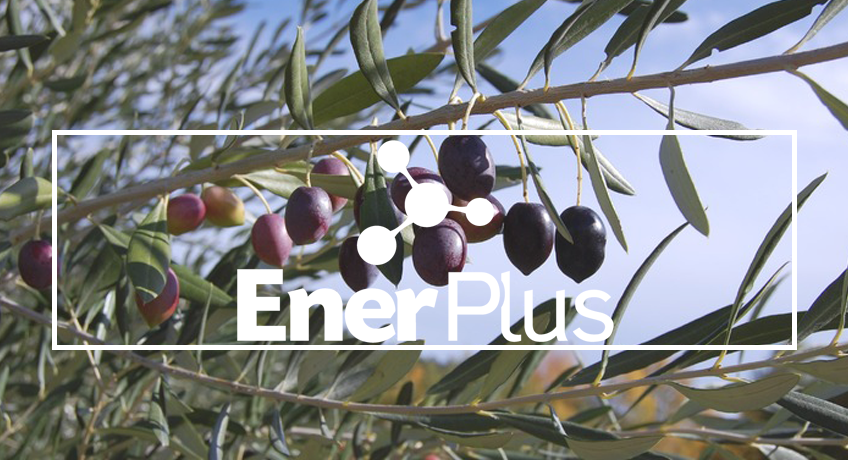
EnerPlus® in olive groves, higher yield and early harvest
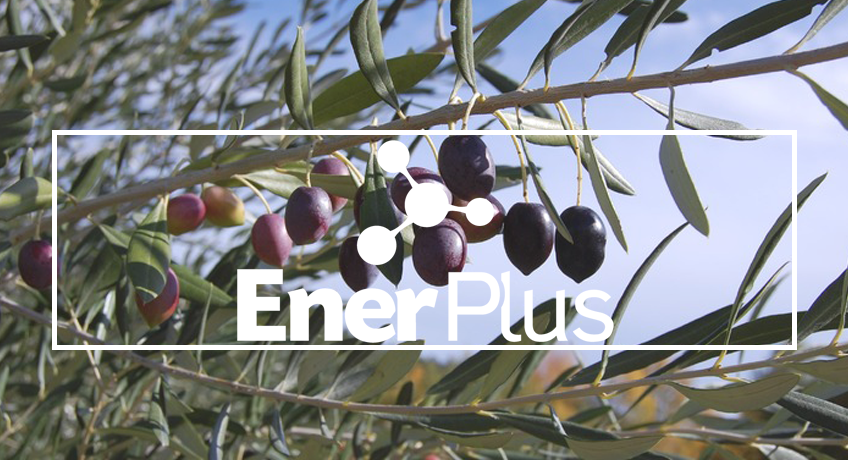
The new Daymsa EnerPlus® biofertilizer achieves an increase in extractability of 38% in the Arbequina variety, confirming yield and early harvest after application.
Daymsa presents EnerPlus®, its new biofertilizer that promotes the biological activity of the soil with exclusive microorganisms, Pseudomonas fluorescens GR-322, which enhance beneficial microbial life on the root surface and increase plant activity.
To verify the benefits of the use of EnerPlus® in the cultivation of olive groves, Daymsa has carried out a study with the aim of confirming the influence of applications of this product based on microorganisms on the performance of an Arbequina variety olive farm, superintensive planting (SHD).
The treatment with EnerPlus® contributed to reaching maturation earlier and increasing the level of fat on dry matter to anticipate harvesting.
Study Methodology
The study carried out by Daymsa has been carried out in the south of Portugal, in an olive grove producing farm, near Beja, on the Arbequina variety, characteristic in super-intensive crops due to its early harvest, because of the quality of its fruity oils and due to its their prices, being the first to go on the market.
The trial design was randomized blocks with four replications per thesis. The theses to be compared were plots where no microorganisms were applied versus plots where two applications were made via fertigation of EnerPlus® at a dose of 1kg / ha, the application of EnerPlus® being the only difference between both theses.
The applications were made after the fruit set (July 24, 2020) and at maturity (one month later).
Two months before harvest, weekly fruit samples were taken to determine the influence of the treatment on ripening and fruit quality (from October to November). For each sample, fruits were taken from several trees within the replica until 1 kg was collected.
Proven results
An external laboratory was in charge of analyzing the samples and determining the content of total fat (Graph 1), fat on dry matter (Graph 2) and humidity (Graph 3).
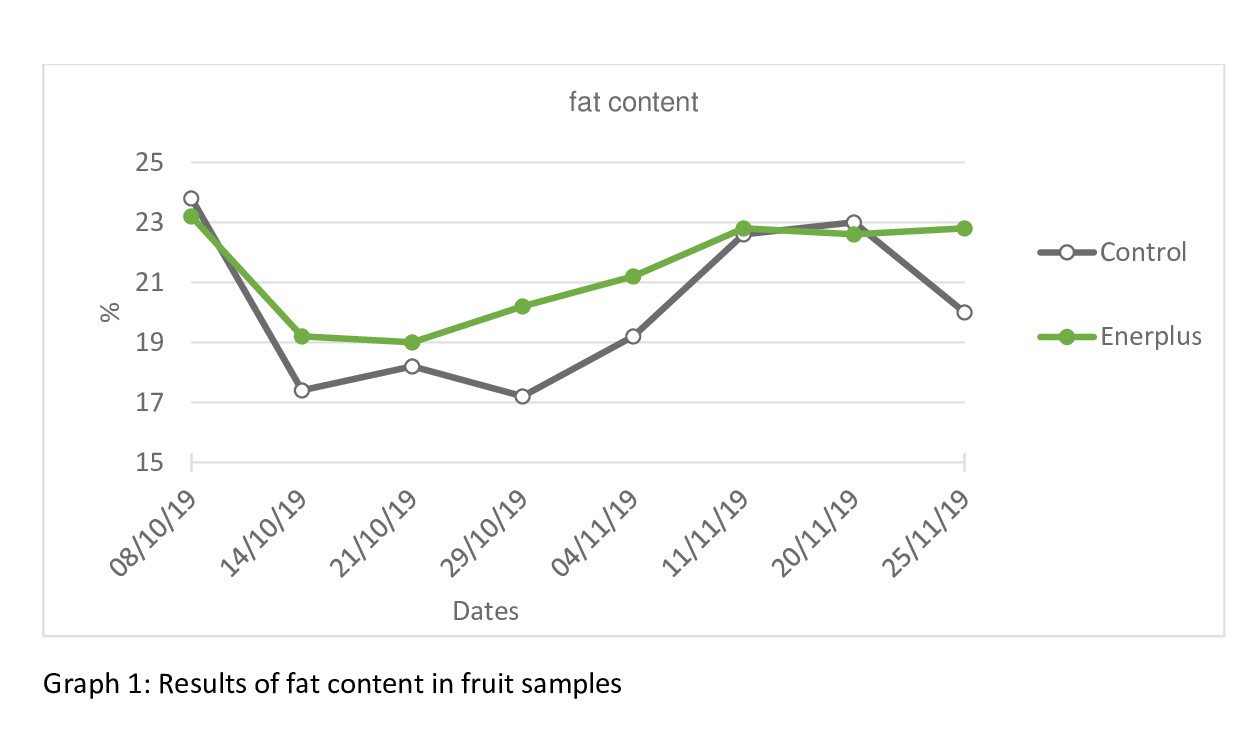
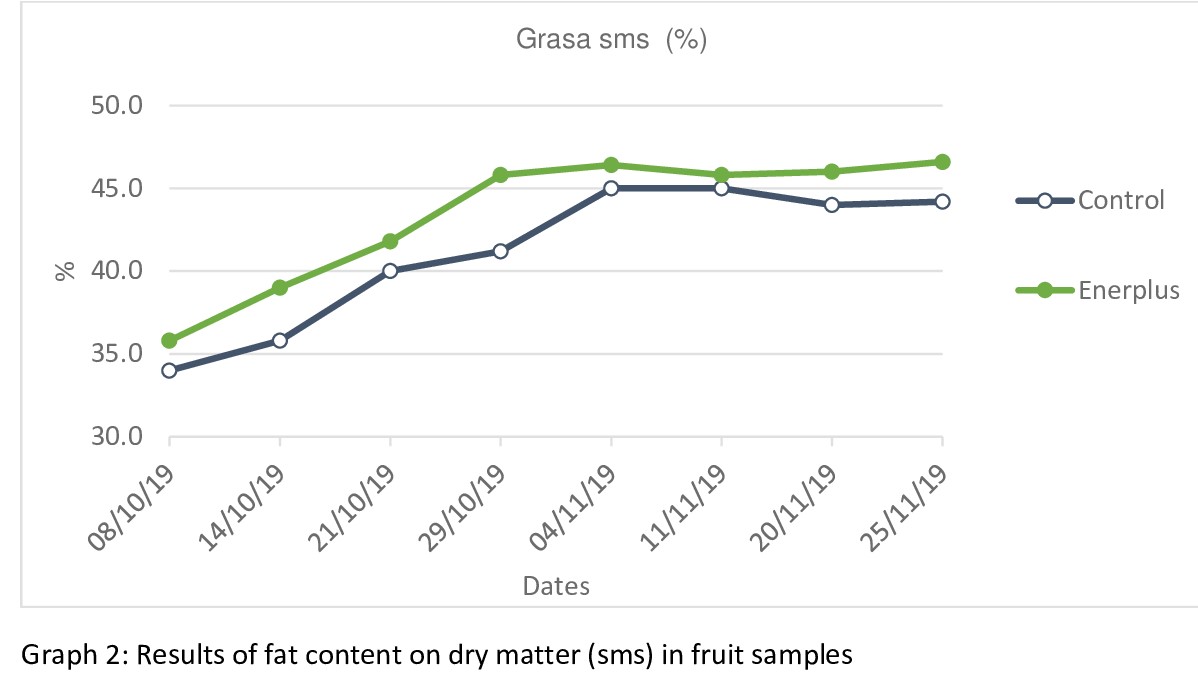
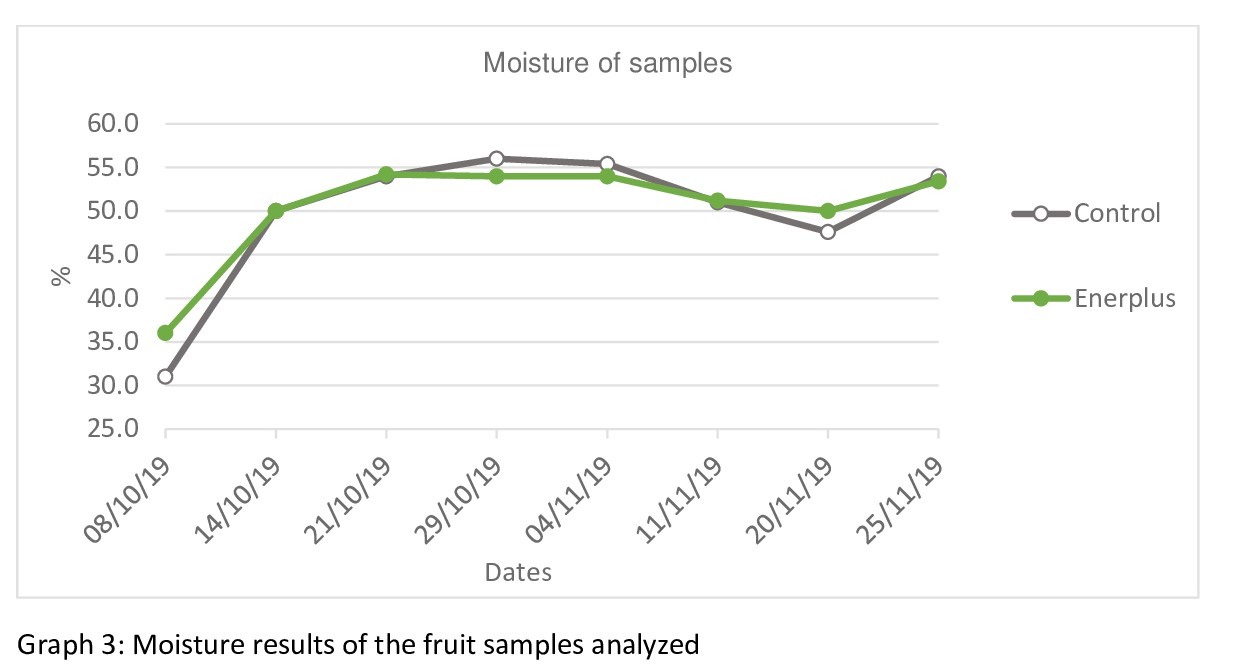
After harvesting, the percentage of oil obtained with respect to the total weight of the fruit was calculated. This parameter (extractability) was compared in both theses (Graph 4). For this, the oil was extracted at a constant temperature in farm’s own facilities

